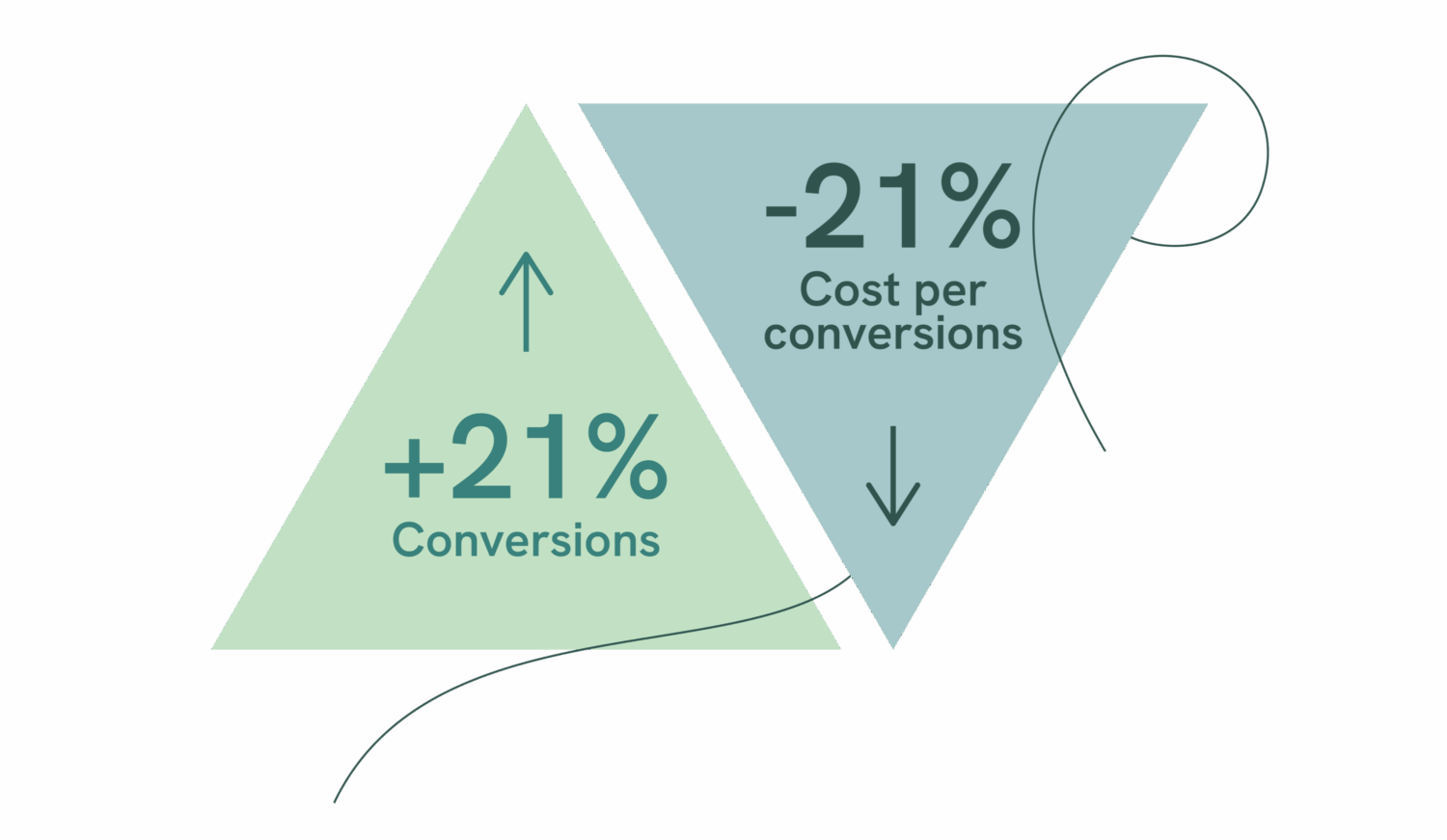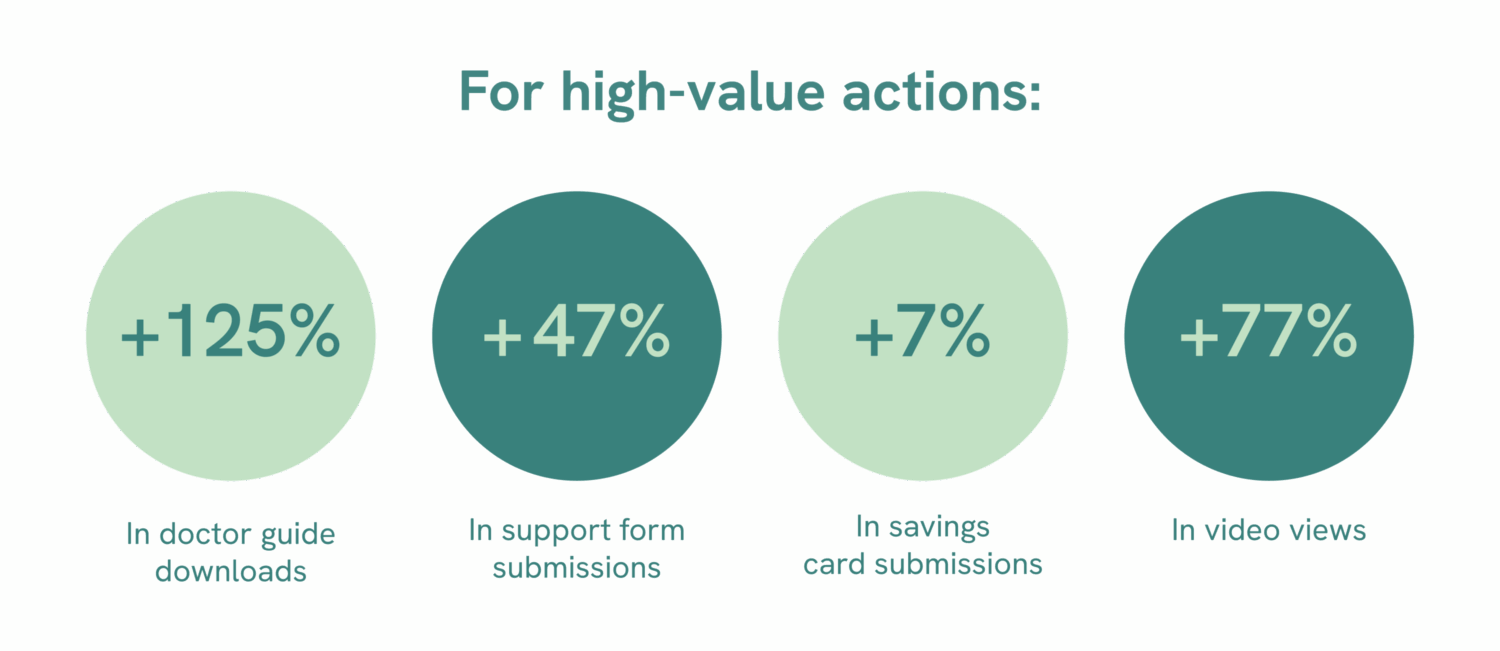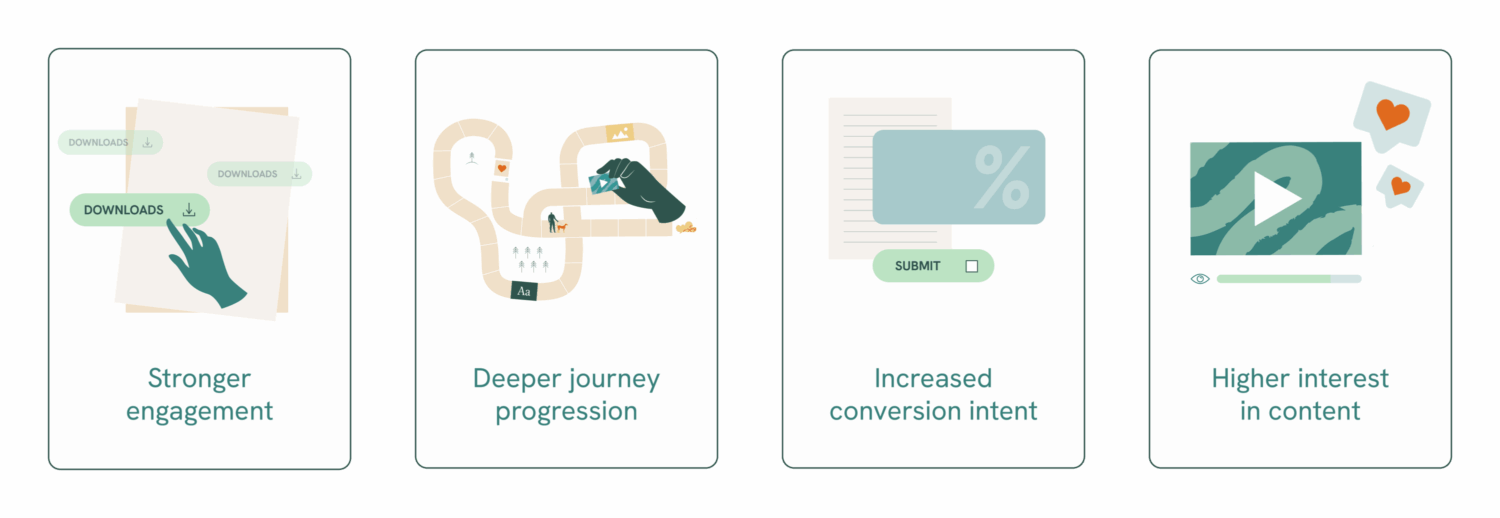Get the most out of Google Ads with value-based bidding

Advertising has always been challenging for regulated brands
For industries like healthcare and financial services, strict privacy regulations such as GDPR and HIPAA limit how much consumer behaviour can be tracked. For example, pharmaceutical companies can’t see whether a patient actually fills a prescription, and financial institutions face restrictions on linking advertising to specific account activity. These limitations make it difficult for marketers to measure true impact or know if they’re reaching the right audiences effectively.
On top of that, many brands in regulated sectors remain (understandably) cautious about handing over control to automated tools.
Google’s value-based bidding (VBB) offers a more nuanced approach to defining conversions that has the potential to change the game for regulated brands. As a certified Google Premier Partner, we were invited to beta test the tool for a pharma client, and the results were compelling.
Why traditional bidding isn’t enough
In regulated industries, a ‘conversion’ doesn’t tell the full story. For example, pharma brands can’t link ads to actions like prescription fills. Brands instead rely on lower-funnel signals that imply intent, such as downloading a doctor discussion guide, submitting a savings card form, or reaching out for patient support.
But traditional bidding strategies don’t distinguish between these actions and those higher up the funnel. Whether someone watches a video or applies for a savings card, it’s all weighted equally. That means media spend often gets directed towards high-volume actions that don’t necessarily drive meaningful outcomes.
Bringing more precision to conversion values
To put value-based bidding to the test, we ran a pilot with a pharma client across their paid search campaigns.
Our approach:
- We assigned values to different actions based on their likelihood to lead to meaningful engagement.
- We used privacy-compliant, third-party historical data to inform value assignments.
- We shifted campaign optimisations from conversion volume to conversion value.
Using quantitative third-party research, we grouped actions into two tiers:
- High-value actions: doctor guide downloads, savings card submissions, support form submissions and video views
- Low-value actions: quiz interaction
The results
With a more accurate understanding of action value, we were able to allocate spend more effectively – increasing conversions while reducing waste.
The results speak for themselves.


What these results tell us
Our test confirms that value-based bidding can successfully prioritise the engagement actions that matter most to regulated brands – helping focus media investment on outcomes with real business value.
Where value-based bidding delivers particular impact:
- It improves ROI while maintaining compliance with privacy regulations like HIPAA and GDPR.
- It enables brands to reach customers who are further along in their journey.
- It allows brand marketers to make better use of historical engagement data to inform strategy and planning.

The verdict: there’s real value in value-based bidding
Value-based bidding has the potential to reshape how brands in regulated industries plan, execute, and measure search campaigns. As early testers, we’ve seen how this smarter approach to automation can deliver stronger engagement and cost efficiency without giving up essential controls.
As Google rolls out VBB more broadly, more brands will be able to take advantage of this customisation to connect meaningfully with their target audience.
Are you ready?
Value-based bidding isn’t one-size-fits-all and works best in conjunction with research that identifies your funnel’s high-value actions. Our results highlight the importance of platform-specific strategies and careful configuration to make the most of what this tool offers.
Want to see what value-based bidding could do your brand? We’d love to chat.


